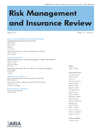
RISK MANAGEMENT AND INSURANCE REVIEW
Scope & Guideline
Exploring the Nexus of Risk and Insurance Excellence
Introduction
Aims and Scopes
- Risk Assessment and Management:
The journal emphasizes methodologies and frameworks for assessing and managing various types of risks, including financial, operational, and environmental risks. This includes empirical studies that evaluate risk management strategies and their effectiveness. - Insurance Market Analysis:
A core focus is on analyzing insurance markets, including trends, competition, and regulatory impacts. Research often examines how market dynamics influence pricing, coverage, and consumer behavior. - Behavioral Economics in Insurance:
The journal explores the intersection of behavioral economics and insurance, investigating how psychological factors affect decision-making in risk and insurance contexts. - Technological Innovations in Insurance:
With the rise of InsurTech, the journal covers technological advancements and their implications for insurance products, services, and operational efficiency. - Corporate Social Responsibility in Insurance:
Research on the role of corporate social responsibility (CSR) within the insurance industry is highlighted, particularly how CSR practices impact consumer trust and company performance. - Climate and Environmental Risk:
The journal addresses the growing importance of climate-related risks and their implications for insurance coverage, underwriting practices, and policy development.
Trending and Emerging
- Impact of COVID-19 on Insurance Practices:
Research examining the implications of the COVID-19 pandemic on various aspects of insurance, including claims, pricing, and market dynamics, has surged, illustrating the need for adaptive strategies in crisis management. - Cyber Insurance and Risk Management:
As cyber threats grow, there is an increasing focus on cyber insurance, its efficacy, and the strategies organizations employ to mitigate cyber risks, reflecting a critical area of concern for businesses. - Sustainability and Climate Risk Management:
The integration of sustainability practices and the management of climate-related risks within insurance frameworks is emerging as a prominent research area, driven by regulatory pressures and societal expectations. - InsurTech Innovations:
The rise of InsurTech continues to be a hot topic, with research focused on how technology is transforming the insurance landscape, including new business models, data analytics, and customer engagement strategies. - Behavioral Insights in Insurance Decisions:
There is a growing trend towards incorporating behavioral insights into understanding consumer decisions regarding insurance products, highlighting the importance of psychological factors in risk management.
Declining or Waning
- Traditional Risk Models:
There has been a noticeable decline in research focused solely on traditional risk modeling techniques, with a shift towards more dynamic and complex models that incorporate behavioral and technological factors. - General Insurance Marketing Strategies:
While marketing remains relevant, specific studies on general insurance marketing strategies have decreased, possibly as researchers pivot to more innovative and data-driven approaches in the marketing domain. - Historical Analysis of Insurance Markets:
The frequency of historical analyses of insurance markets has waned, as contemporary market dynamics and real-time data gain precedence in research discussions. - Regional Studies in Isolation:
Research focused solely on regional insurance markets without a comparative or global perspective has declined, reflecting a trend towards more integrative analyses that consider global implications. - Static Risk Assessment Tools:
The use of static tools for risk assessment is declining, as the field increasingly adopts dynamic models that account for real-time data and evolving risk landscapes.
Similar Journals
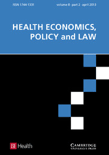
Health Economics Policy and Law
Pioneering Insights at the Intersection of Health and LawHealth Economics Policy and Law is a premier journal published by Cambridge University Press that focuses on the intersection of health economics, policy formulation, and legal frameworks. Since its establishment in 2006, the journal has been at the forefront of disseminating high-quality research, covering critical issues in the ever-evolving health policy landscape. With an impressive impact factor and ranked in the Q1 category of Health Policy according to the latest metrics (2023), it serves as a vital resource for academic researchers, professionals, and students alike. The journal aims to stimulate discussion and influence decision-making by providing rigorous empirical studies, policy analyses, and theoretical evaluations. While not open access, its publications are accessible through institutional subscriptions, reflecting its commitment to supporting scholarly discourse within the field. As it continues to converge towards its 2024 goals, Health Economics Policy and Law remains an essential platform for advancing knowledge and fostering innovation in health policy and law.
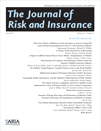
JOURNAL OF RISK AND INSURANCE
Innovating the future of insurance research.JOURNAL OF RISK AND INSURANCE, published by Wiley, stands as a premier platform for advancing knowledge in the fields of risk management and insurance. With an established ISSN of 0022-4367 and an E-ISSN of 1539-6975, this journal is rigorously peer-reviewed, ensuring the highest standards of academic quality. Recognized as a Q1 journal in 2023 across multiple categories such as Accounting, Economics, and Finance, it showcases influential research that addresses complex issues within these domains. The journal is notable for its innovative contributions and is essential reading for researchers, professionals, and students dedicated to understanding the evolving landscape of risk and insurance from 1978 to the present. Although not an Open Access journal, it provides valuable insights for those aiming to enhance their expertise while navigating the intersection of theory and practice.
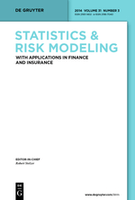
Statistics & Risk Modeling
Advancing insights in statistics and risk assessment.Statistics & Risk Modeling is a distinguished journal published by WALTER DE GRUYTER GMBH, focusing on the intricate relationships between statistical methodologies and risk assessment techniques. With a strong academic foundation, the journal has been an influential platform in its field since its inception, converging contributions from 1982 to 2002 and again from 2011 to 2024. This journal is currently ranked in the Q3 category in both Modeling and Simulation and Statistics and Probability, reflecting its commitment to advancing knowledge and promoting robust research in statistics, probability, and uncertainty analysis. Although it offers a traditional subscription model, its significant contribution to the community is underscored by its increasing visibility in Scopus rankings, where it stands in the 44th percentile for Decision Sciences and Statistics. By comprehensively addressing contemporary issues in statistical theory and its practical applications, Statistics & Risk Modeling serves as an essential resource for researchers, professionals, and students aiming to deepen their understanding of statistical science and its implications in risk management.
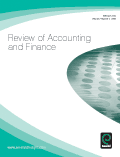
Review of Accounting and Finance
Empowering Research in Economics and AccountingReview of Accounting and Finance, published by EMERALD GROUP PUBLISHING LTD, is a prestigious academic journal with a longstanding commitment to advancing scholarship in the fields of accounting, finance, and economics. With an ISSN of 1475-7702 and E-ISSN of 1758-7700, this journal has established itself as a key resource for researchers, professionals, and students seeking robust empirical and theoretical insights. It enjoys a strong reputation, reflected in its 2023 Scopus rankings, where it is positioned in the top quartile for Economics and Finance, and holds a Q2 category in Accounting. The journal covers a wide range of topics, aiming to foster discussion and disseminate knowledge that bridges the gap between theory and practice. Although it does not offer open access, its comprehensive scope is invaluable for those dedicated to understanding the complexities of financial systems and accounting practices from a global perspective. Published continuously from 2002 to 2024, the Review of Accounting and Finance is an essential outlet for innovative research that drives the discipline forward.

Anales del Instituto de Actuarios Espanoles
Empowering the Actuarial Community with High-Quality ResearchAnales del Instituto de Actuarios Españoles is a prestigious journal dedicated to advancing the field of actuarial science and related disciplines. Published by the Instituto de Actuarios Españoles, this journal serves as a vital platform for researchers, practitioners, and students aiming to share innovative methodologies, comprehensive analyses, and groundbreaking research that contribute to the actuarial profession. Although not an open-access journal, its rigorous peer-review process ensures high-quality publications that have garnered respect within the academic community. With an ISSN number of 0534-3232 and an E-ISSN of 2531-2308, Anales del Instituto de Actuarios Españoles plays a crucial role in disseminating knowledge that shapes actuarial practices and policies, thereby enhancing the effectiveness of the profession in addressing contemporary challenges.

METHODOLOGY AND COMPUTING IN APPLIED PROBABILITY
Exploring the synergy between probability and computational techniques.METHODOLOGY AND COMPUTING IN APPLIED PROBABILITY is a distinguished journal published by SPRINGER, dedicated to advancing research in applied probability and its relationship with various computational methodologies. With an ISSN of 1387-5841 and an E-ISSN of 1573-7713, this journal provides a platform for innovative studies that bridge theory and practical application in the field of mathematics and statistics. Ranking in the Q2 category for Mathematics (miscellaneous) and Q3 for Statistics and Probability as of 2023, it reflects a robust academic discourse, featuring contributions that span a range of methodologies utilized in probability-related studies. The journal's sustained engagement in the academic landscape from 2004 to 2024 puts it at the forefront of ongoing developments in statistics and probability. Researchers, professionals, and students alike will find the insights found within to be invaluable for both theoretical understanding and practical implementation.

Decisions in Economics and Finance
Exploring Innovative Solutions in EconomicsDecisions in Economics and Finance, published by SPRINGER INT PUBL AG, is a leading journal in the fields of economics, econometrics, and finance, providing a critical platform for researchers, professionals, and students to disseminate their findings and insights. With an impressive impact factor positioned in the Q2 category for both Economics and Finance in 2023, this journal is recognized for its rigorous peer-reviewed process and impactful research contributions. The journal spans over areas of general economics and finance, emphasized by its Scopus rankings, which place it in the 68th and 50th percentiles respectively. Since its inception in 1997 and continuing through its conferred years, Decisions in Economics and Finance continues to foster innovative approaches to economic and financial decision-making while bridging theoretical and practical applications. While it currently does not offer Open Access options, its commitment to quality research and interdisciplinary collaboration makes it a vital resource for anyone engaged in these dynamic fields.
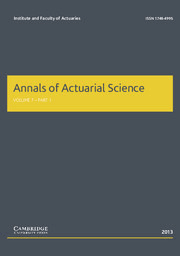
Annals of Actuarial Science
Driving excellence in actuarial practice and decision-making.Annals of Actuarial Science, published by Cambridge University Press, stands as a prominent academic journal in the fields of economics, statistics, and actuarial science. With an ISSN of 1748-4995, it features rigorous research aimed at advancing knowledge and practice in areas related to risk management, data analysis, and probability. The journal is recognized for its significant impact, holding a Q2 category ranking in both Economics and Econometrics and Statistics and Probability, along with notable positioning within Scopus rankings. Although it does not currently offer open access, its comprehensive selection of scholarly articles from 2010 to 2024 remains invaluable to researchers, professionals, and students alike, providing insights that drive the actuarial profession and enhance decision-making processes across various sectors. Positioned at the intersection of theoretical innovation and practical application, the Annals of Actuarial Science continues to shape the discourse and development of its disciplines.

Risks is an esteemed Open Access journal published by MDPI, based in Switzerland, dedicated to exploring multifaceted dimensions of risk across various fields, including Accounting, Economics, Finance, and Management. Since its inception in 2013, the journal has fostered academic discourse by providing a platform for high-quality research that addresses contemporary challenges and theoretical advancements within these disciplines. With a commendable ranking in the 75th percentile for Economics, Econometrics and Finance, and distinction in Accounting and Strategy Management, Risks maintains robust academic quality that resonates within the global research community. The journal not only prioritizes accessibility with its Open Access model but also aims to bridge the gap between academia and industry through rigorous peer-reviewed publications. Researchers, professionals, and students alike will find Risks to be an invaluable resource for innovative insights and evidence-based analyses in the field of risk management.

Connecticut Insurance Law Journal
Championing Excellence in Legal ScholarshipWelcome to the Connecticut Insurance Law Journal, an esteemed academic publication dedicated to advancing scholarship in the field of insurance law. Published by the University of Connecticut School of Law, this journal aims to provide a platform for researchers, practitioners, and students to explore contemporary issues and emerging trends in insurance legislation and policy. The journal, bearing the ISSN 1081-9436, offers a valuable resource for those invested in legal studies, featuring contributions from prominent scholars and professionals. While it does not operate under an Open Access model, readers can expect high-quality articles that delve deep into critical legal analyses, case studies, and discussions that shape insurance law practices today. As insurance law continues to evolve in response to economic and social changes, the Connecticut Insurance Law Journal is essential for those seeking to stay informed and engaged in this vital area of study.